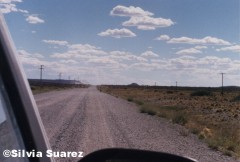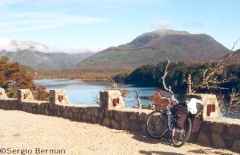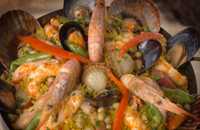Some general information on the Patagonia region
Patagonia is huge and comprises five provinces: Río Negro, Neuquén, Chubut, Santa Cruz and Tierra del Fuego. It occupies an area of 880,000 km ², one third of the total extension of Argentina, the eighth largest country in the world.
Its number of inhabitants is about 1,500,000, a mere 5% of the total, with a very low population density (there are areas where there is less than one person per square kilometer). The official language countrywide is Spanish.
What is weather like in Patagonia?
The weather is mild to cold, with well-marked seasonal differences. There are large temperature variations between summer and winter. Also characteristic of the climate is the wind, which often reaches intensities of about 100 km / h., Especially in the Central and Atlantic zones. See our full report on the Patagonian climate for details.
Are Patagonia’s routes ok to drive?
 While in Patagonia there are few paved roads (most are gravel), they are passable. Anyway, one should always inquire about road conditions right before starting the the trip, directly to National Roads Authority. Keep in mind the season also because in winter, especially in the mountainous areas, there may be restrictions due to snow or ice. It is also important to take into account the special recommendations for driving through gravel roads.
While in Patagonia there are few paved roads (most are gravel), they are passable. Anyway, one should always inquire about road conditions right before starting the the trip, directly to National Roads Authority. Keep in mind the season also because in winter, especially in the mountainous areas, there may be restrictions due to snow or ice. It is also important to take into account the special recommendations for driving through gravel roads.
Is Patagonia a safe area?
There are no serious security problems in Patagonia. The greatest risks are associated with isolation. If traveling by car make sure you do have the amount of fuel needed to reach your destination, check the vehicle’s condition and bring some supplies with you in case you eventually have to wait for help. If you are making walking and/or cycling routes along less traveled paths, contact a ranger or manager or any other person in the area and make sure you let them know about your journey and its estimated duration.
Can I go cycling in Patagonia?
 We could not say that this is impossible … Adventurous souls are always ready for anything! But keep in mind that, as we said at the beginning, Patagonia is a huge region and often one travels many miles without finding a populated place, two features not very encouraging for cycling. What tends to be in the imagination of the traveler at the time to say “I’m going to travel Patagonia by bike” is biking through some of the classic routes, most of them in the Andean region. One of the most typical is the Road of the Seven Lakes. Other options include a crossing to Chile that can be done from El Bolsón or Bariloche or Villa La Angostura, the Alerces National Park, between Esquel and El Bolsón, or, in the extreme south, the Tierra del Fuego National Park. In Atlantic Patagonia there are fewer options, one of the best known is the tour of Peninsula Valdes, leaving from Puerto Pirámides.
We could not say that this is impossible … Adventurous souls are always ready for anything! But keep in mind that, as we said at the beginning, Patagonia is a huge region and often one travels many miles without finding a populated place, two features not very encouraging for cycling. What tends to be in the imagination of the traveler at the time to say “I’m going to travel Patagonia by bike” is biking through some of the classic routes, most of them in the Andean region. One of the most typical is the Road of the Seven Lakes. Other options include a crossing to Chile that can be done from El Bolsón or Bariloche or Villa La Angostura, the Alerces National Park, between Esquel and El Bolsón, or, in the extreme south, the Tierra del Fuego National Park. In Atlantic Patagonia there are fewer options, one of the best known is the tour of Peninsula Valdes, leaving from Puerto Pirámides.
Can you go camping in Patagonia?
Yes, in fact it is the most popular choice among young people. There are camping sites in almost all localities of Patagonia. And wild camping is allowed in many places. Of course you must be very careful when lighting fire, respect the existing prohibitions and always keep in mind the saying that you have to act so that after eaving no trace of your presence is left there. Please read the Eco-traveller Decalogue at our site, to raise awareness of the need to protect the environment when you travel.
Can indigenous communities be visited?
While there are indigenous (Mapuche) communities, only a few are open to tourism. Most of them are in the area north of Neuquén.
Is there a risk of disease transmission in Patagonia?
Patagonia is an endemic diseases free zone, so no special vaccinations are needed to travel.
Is it safe to eat seafood in Patagonia?
Seafood consumption is usually seasonally restricted by the presence of red tide, a fact which is informed through the media. Outside of these special periods, consumption of seafood is absolutely safe.
What is the typical food of Patagonia?
 It’s hard to say which is the typical food of the region, since there are many different areas and communities. If we look for something in common to all of them, the Patagonian lamb meat is typical of the region and the most traditional way to prepare it is al asador.
It’s hard to say which is the typical food of the region, since there are many different areas and communities. If we look for something in common to all of them, the Patagonian lamb meat is typical of the region and the most traditional way to prepare it is al asador.
Apart from this, in our articles about the most important Patagonian destinations we have included a section named “What to Eat”, where you will find more specific information.























